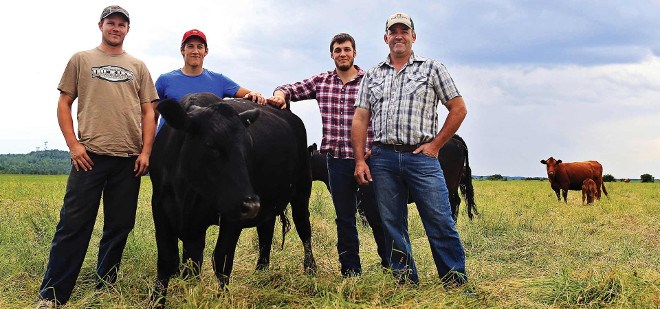The Beef Farmers of Ontario hope a farm familiarization tour of the Clay Belt region will expedite the expansion of the province’s cow-calf herd into northeastern Ontario.
The association is hosting a Northern Farm Tour, Aug. 17-20, for those who are curious and want to learn more about farming opportunities in the Temiskaming and Cochrane districts.
“When we talk expansion, we’re talking all of the North,” said Katherine Fox, policy advisor for the Beef Farmers of Ontario (BFO).
But the area with the greatest potential for immediate growth is north of New Liskeard along the stretch of Highway 11 that arcs through the Cochrane District through Kapuskasing and toward Hearst.
The Beef North website identifies some 16 million acres in the prairie-like Clay Belt that’s underutilized and suitable for pasture-based beef production.
“That’s more land than all of the agricultural lands in Ontario right now,” said Fox.
The tour is a recruiting tool that’s part of the Beef Farmers’ northern expansion program, Beef North.
Ontario’s beef herd has been dwindling since Canada’s mad cow crisis in the mid-2000s, its farm workforce is aging, and the price of farm land in southern Ontario is too exorbitant for the offspring of farm families to acquire.
“We need to have an industry that is sustainable in the long term and that can feed our growing population and there’s just so much opportunity up there,” said Fox.
“Beef just happens to be perfect for the Clay Belt region because of the climate and the soil. Maybe corn is not going to grow up there but you can grow great grass.”
Prime farmland in southwestern Ontario can sell for thousands of dollars an acre. In relatively undeveloped places in the North, it’s only a few hundred dollars.
“In the past few years that we’ve been talking about the opportunities in the North,” said Fox.
“We’ve heard from farmers from all across the province who have experienced the challenge of finding land, either to establish an operation or expand their existing operations.
“Sometimes it’s the son or daughter of an existing farmer with a big family and they want to have their own place. But it’s not always a sure thing that you’re going to have your family’s farm. Sometimes it’s just that land prices are going up so high that it’s not feasible for everyone in the south.”
Besides more affordable land, Fox said a huge selling point is that the environment and climate are ideal for livestock.
Snow cover and consistently cold temperatures are better and healthier for cattle than the freeze-and-thaw cycles in southern Ontario.
The August tour will take potential newcomers to view well-established beef farming operations as well as the farms of some new arrivals, to show the difference, Fox said.
There will also be speeches by area community and agriculture representatives, information sessions on what farm support and funding programs are available and what regional agricultural research projects are going on.
Fox said in early July that they were still finalizing the details on the number of participants for the tour and had not yet set a deadline for registration. The BFO was extending invitations through the various agricultural networks to find the right people to take the trip north.
The tour is geared toward both established and first-time farmers from outside the region who are seriously considering a move. Travel and accommodations are free of charge.
“It’s a targeted tour,” said Fox. “We’re not expecting huge numbers. They don’t need to be seriously packing their bags right now but they must be willing to entertain the idea.”
The BFO’s expansion model for the North is multi-faceted, taking into account environmental best practices and buffers for wetlands, and negotiating with the province to open up Crown land to agriculture.
In May, Ontario’s Ministry of Agriculture signalled a willingness to be involved in launching consultations with municipalities, Indigenous communities, livestock organizations and industry through a Northern Livestock Pilot Project aimed at promoting cattle farming on the Clay Belt.




